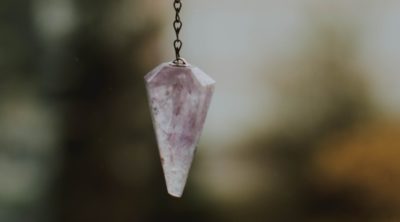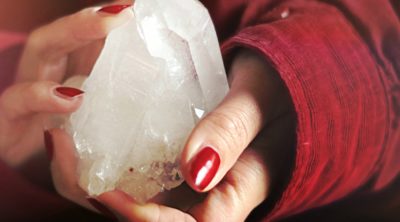
Deriving its name from the village of Shunga, shungite is a 2-billion-year-old stone found primarily in the Russian region of Karelia. It has appeared in the history of Russia in the form of natural springs that were known for its healing properties.
Occurrence of Shungite
Shungite is a rare, ancient, dark black stone that is mined in the Republic of Karelia in Russia. Its name is derived from the Karelian village of Shunga, which is located on the shore of Lake Onega. There are three main areas in the Republic of Karelia where it has been found and mined. The first is its namesake Shunga, Zazhoginskoe field near the village of Tolvuya, and also at Vozhmozero.
Shungite Highlights
- Shungite derives its name from the Karelian village of Shunga where it’s primarily found today.
- It is believed to be 2 billion years old, formed from marine sediments enriched by the organic remains of ancient organisms.
- Water from a shungite spring is believed to have helped cure Martha, the mother of Mikhail Romanov, the first tsar of the Romanov dynasty, playing a critical role in shaping the history of Russia.
- Peter I built the first Russian spa called “Marcial Waters” due to the results of investigations into shungite springs and their medical benefits.
- Shungite is believed to have healing powers that can help people maintain their overall health.
- Due to the stone’s electric-conducting properties, it is a great grounder, which people can use for meditation.
- It first appeared in the Russian chronicles of the 17th and 18th centuries as slate.
- Shungite can help negate the radiation given off by electronic devices.
- Researchers found that shungite contains natural fullerenes which are powerful biological antioxidants.
- Experimental medical uses of shungite in the form of a paste and medical baths have produced positive results in the condition of patients suffering from certain ailments.
The Formation and Mining of Shungite
The exact age of shungite is still unknown, however, most scientists agree it is roughly 2 billion years old. There are a few theories out there explaining the origin of shungite. Some believe that shungite derived from marine sediments that were enriched by organic remains of ancient organisms. The next theory derives from the “disruption theory” put forth by German astronomer Heinrich Olbers who believed that another object once orbited between Jupiter and Mars, which formed the asteroid belt. Though this theory has fallen out of favor due to the rise of the “accretion theory,” some thought shungite was formed from a meteorite that fell to the earth after the destruction of this hypothecate celestial body. The final theory is that shungite may have formed due to volcanic emissions since its composition is similar to other volcanic materials.
There are three common forms of stones that are referred to as shungite but differ in carbon composition.
Type I Shungite
Type I shungite, or silver shungite, is black and, as its name suggests, has a silver-like shine. It contains 98% organic carbon and is the rarest form of shungite since it only makes up about 1% of all shungite that is found.
Type II Shungite
Type-II shungite, or black shungite, contains anywhere from 50 to 70 percent of organic carbon. This is the shungite most sought after for when making objects since it can be shined easily.
Type III Shungite
Type-III shungite, or fray shungite, contains around 30 to 50 percent organic carbon. This last type is not typically referred to as shungite but shungite rock since it contains a lower percentage of organic carbon.
Shungite can be used to describe two different kinds of forms: one which is a solid carbon-based stone, the other referring to stones that contain fragments of shungite. On the Moh’s Scale, shungite is anywhere from 3.5 to 4 in hardness. It looks similar to asphalt (bitumen) and anthracite coal, but is considered a pyrobitumen since it does not melt. As previously stated, the most fruitful deposits of shungite are located in the Republic of Karelia in Russia.
Shungite Throughout History
The first settlers around Lake Onega in Karelia arrived after the ice had retreated from the last ice age around 9,000 years ago. Evidence of these people remains on the eastern shore where the largest collection of rock carvings resides, depicting mythological scenes carved by the Finno-Ugric peoples. Although the meaning of the symbols remains for the most part a mystery, they do depict certain themes of nature with anthropomorphic motifs, with a great emphasis on waterfowl, particularly the swan.
Archaeologists have found several sacred sites around the lake, including burial sites and sacred stones in the region of Karelia. These places were sacred to the Sami people, whose pagan religion was rooted in shamanism and animism. It is believed that they thought of Lake Onega as a sacred place.
It would not be until many centuries later that orthodox churches would be constructed in the area. Some churches have been dated as far back as 1496, but many were destroyed due to a fire. The most famous of these constructions is the Kizhi Pogost, a parish precinct located on the island of Kizhi near the center of Lake Onega. It has been designated as a UNESCO World Heritage Site.
Its greatest attractions include two 18th century churches, the Church of Transfiguration and the Church of Intercession. The Foremost was built without the use of a single nail, giving rise to many legends, including the tale of Master Nestor, who supposedly threw his ax into the lake and said, “There was, there is, but there won’t be such a beauty anywhere else.” Like many churches in Western Europe, this location was not chosen at random. They were constructed purposefully on trade routes, paying close attention to the beauty of the land surrounding the area. Much like their ancestors, they too wanted to tap into the natural splendor of the lands surrounding the lake.
Shungite appears in the Russian chronicles from the 17th and 18th centuries. One of the most famous stories, as well as the first instance of shungite’s proposed healing powers, dates to the reign of Ivan the Terrible at the end of the 16th century, leading into the 17th century. His last son Feodor I took the throne upon his death in 1584, but Feodor would only reign for 4 years, passing in 1584. This gave rise to Boris Gudinov, who ended up falsely claiming that Feodor Romanov was guilty of treason. He banished Feodor, his wife Xenia, and his son, Mikhail Romanov, and demanded they take up monastic vows.
Xenia became a nun, and adopted the name Martha, taking up residence at the Tolvuya hermitage on Lake Onega. Suffering from a decline in her health, she would struggle until the death of Boris Gudinov in 1605. Afterwards, she finally was able to get help and was nursed back to health with water from a shungite spring, though at the time shungite was known as slate. After recovering, she was able to reunite with her son Mikhail, who would be the first ruler of the Romanov dynasty after being elected tsar in 1613. This would bring an end to the Time of Troubles, which was a period of fifteen years of political turmoil.
This Spring became known as the Spring of the Princess to honor Martha; however, it soon was forgotten except by the locals. Shungite would resurface almost a century later in 1714. The legend says that the copper workers in a factory on Lake Onega could be healed from any sickness derived from the mining of copper in three days after with the water from a nearby spring containing shungite. Peter I ordered an investigation into the matter, and it revealed the medical potential of this shungite spring water.
Shungite’s Contribution to Russian History:
Peter I ordered the construction of the first Russian spa on a small lake near Lake Onega at Konchezero. It was called Marcial Waters and had three wooden palaces. Sadly, these palaces were lost in a fire in 1780. Peter would visit with his family throughout the 1720s. After his death, the spa would be closed, again leaving the knowledge of these springs in the hands of the locals.
Research into the springs would not be conducted until the 1930s. Though there was a push to build another spa, World War II prevented such an endeavor. The 60s saw the construction of a new spa and an increase in clinical research into the medicinal properties of this wonderful stone.
Uses and Benefits of Shungite
Uses and Benefits of Shungite
- Has Healing and protection properties
- Protects from electromagnetic radiation
- Has electric-conducting abilities
- Helps focus and meditate
- Protects from bad luck and keeps negativity at bay
Healing and Protection Properties
As seen throughout history with water, it is to this day still used in potions and elixirs to improve and help heal people suffering from certain ailments. Much like how we use activated carbon today to disinfect and purify water, shungite’s carbon structures contributes to its ability to create the clean water revered throughout history. More recently, it was found that the rock contains fullerenes, which have the potential to be biological antioxidants.
Protection from electromagnetic radiation
It is a great protector from electromagnetic radiation produced by electronics. Some of the key electronic devices it can help negate include, microwaves, computers, cell phones, and televisions. These man-made electronic instruments have known to have negative effects on people’s health, and shungite is a great way to protect oneself.
Electricity-Conducting Abilities
Its electricity-conducting abilities allow it to be a great grounder. This can be used to help individuals focus when attempting to put all of their mental energy towards a specific goal. Whether it be for magic or meditation, shungite can be used to help drive you towards your desired goal or outcome.
Keeps Negativity at Bay
Due to its deep black color, many believe that it has the ability to protect one from bad luck. It is said that the stone has the ability to shroud a person in darkness so that bad luck cannot find them. Moreover, it can help hold anything negative at bay, and counteract the shadow-self, the unconscious part of our ego that many identify as the dark side of our personality.
Recent Research and Their Findings
Grigory Andrievsky, working at the Institute of Therapy at the Ukrainian Academy of Medical Studies, was the first scientist to prove that shungite’s amazing medical properties were due to fullerenes present in the stone. However, his research was not able to assign shungite fullerenes to a pharmaceutical classification due to how the concentration of fullerenes in an aqueous solution is not recognized as a remedy or a medication in the general acceptance sense of the word. Rather, these natural fullerenes operate on a systematic level rather than a treatment for illness.
Though natural fullerenes cannot be classified as a medication, its potent antioxidant properties explain more thoroughly its function. Basically, the body functions on the balance of antioxidants and free radicals, and natural fullerenes present in shungite water gives us a potent a potent antioxidant to help keep this balance. In comparison to other antioxidants found in Vitamin C and E, for example, these natural fullerenes have a stronger effect and last much longer.
Did You Know?
The head of a sanatorium near Moscow, Nina Kolesnikova, used shungite as a way to treat certain illnesses. Her patients that had joint problems, suffered from hypertension, and psoriasis, were given a shungite bath for ten to fifteen minutes each day. She found that these patients ailments became more stable. They also used a shungite paste and applied it to affected areas for patients who suffered from joint problems and psoriasis. They saw a reduction in lesions and joint pain.
These two researchers were not the only ones to attempt to understand the healing properties behind shungite. A congress held in 2006 in the town of Petrozavodsk in Karelia brought together many researchers who studied shungite and shared their findings. Some of the things that were covered include the use if a shungite paste to treat people suffering from osteoarthritis, shungite treatments for illness involving the respiratory tract obstruction, and the experimental medical use of shungite therapy at the White Springs Sanatorium in Petrozavodsk.
Disclaimer: The information provided here is for entertainment and reference purposes only. It is based on centuries of folklore, most of which came about before the age of modern medicine. It is not meant as actual medical information. For advice about any of the illnesses listed, please visit a qualified physician.





